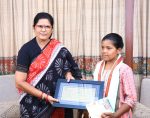By Dr. George Jacob
Kochi, July 29, 2020: Kerala’s ‘Covidian’ battle began with arrival of three students from Wuhan on January 30. One among them was the first case reported in Kerala as well as India.
Lessons learnt from its successful battle against Nipah viral infection of 2018 had the Kerala government quarantine 3,000 contacts of the affected straightaway. February saw the three students recover. The ‘state calamity’ was subsequently withdrawn.
But Kerala witnessed a second spurt of cases when a three-member family from Italy — a then viral hotspot — reached Ranni in Pathanamthitta district on February 29. The family later tested negative on March 28, and has since returned to Italy. Kerala registered no case on many days in May.
AAs Delhi, Gujarat, Maharashtra and Tamil Nadu turned viral hotspots, Kerala managed to hold on her own through initiatives like ‘Break The Chain’ campaign, community kitchens, free ration, online classes, extended quarantine for 28 days, closure of places of worship, educational institutions, malls, Cinema Halls and restricting guests at social functions.
Kerala, for her relatively low cases won national and international accolades and from the WHO. Encore of her triumph over Nipah seemed at hand.
But that was not to be. Kerala was required to welcome into her fold her citizens stranded in viral hotspots around the world, and other Indian states. The state was indebted to the Non-Resident Keralites for contributing to her economy through remittances from around the world where they turned blood to sweat.
As many as 427,000 NRKs registered on the NORKA portal to return home. They constituted the elderly, the pregnant, students done with their courses, and those whose visas and work permits had expired.
Kerala and her citizens took upon themselves the responsibility of repatriating their brethren in distress wholeheartedly. This despite being aware of a possible viral spurt with their arrival. 510,773 had arrived by air, sea and land by July 12.
Kerala’s reputation as an accomplished ‘viral beater’ then took a beating. Number of days taken for cases to increase by multiples of thousand reduced drastically. If it took 118 days for Covid-19 positive cases to touch the 1,000 mark, it took only 50 to touch 10,000. The virus seemed to have had Kerala down on the mat!
The damage was there for all to see. On July 17, Kerala registered 10,275 positive cases, of which 37 succumbed. Concomitant with resurrection of the viral curve which had once been flattened, number of cases transmitted locally, and those with untraceable contacts too peaked.
Community transmission seemed real. Kerala’s local transmission rate was a scary 32 percent on July 16. Adding to the grim picture, 60 percent of those testing positive for Covid-19 were reportedly asymptomatic. Despite the burgeoning number of positive cases brought about by repatriation from abroad and elsewhere in India, all is not bad news for Kerala.
Kerala’s Case Fatality Rate-CFR (number of deaths/100 cases) is only 0.39 against the global average of 4.38 and national average of 2.67. Tamil Nadu and Karnataka records CFR of 1.42 and 1.77 respectively.
Summing up, things looks grim for Kerala on the Covid front due to (1) Cases increasing by multiples of over 1000 daily, (2) Community transmission, the most feared nightmare turning reality on 17 July 2020.
The chief minister confirmed the same on that day when two places- Poonthura and Pulluvila in Thiruvananthapuram reported more than 50 percent of samples tested in those two places tested positive, and (3)60 percent testing positive for the virus being asymptomatic.
Despite the increasing cases, and confirmation of community spread, Kerala can still hold her chin up due to 1. low CFR, and 2. Much less harassed and spent Healthcare facilities as in the states of Gujarat, Maharashtra and Delhi, where such facilities turn patients away from their doors for dearth of beds and equipment and healthcare providers succumbing to the virus in large numbers.
A distinct pattern in Kerala wherein the public sector caters to COVID patients and the private sector to non-COVID disease entities has contributed to availability of relatively preserved healthcare facilities.
Kerala can still come up trumps against the virus. But she has to religiously stick to basics such as more testing, meticulous contact tracing, quarantining them and observance of social distancing.
Along with this, it has to insist on the use of masks, hand hygiene, cough etiquette, and provide healthcare providers with adequate protective devices such as masks, face shields, and PPEs.
This is exactly what Asia’s largest slum Dharavi in Maharashtra and nations like New Zealand and South Korea taught the world. These seem to have emerged as measures effectively staving off the viral mayhem until effective treatment modalities and maybe a vaccine emerge eventually.










